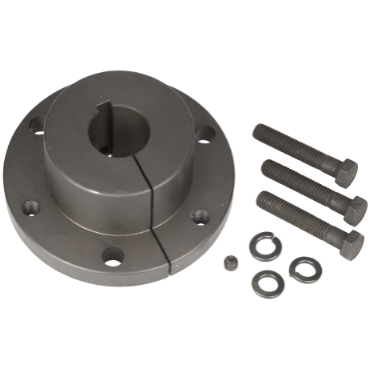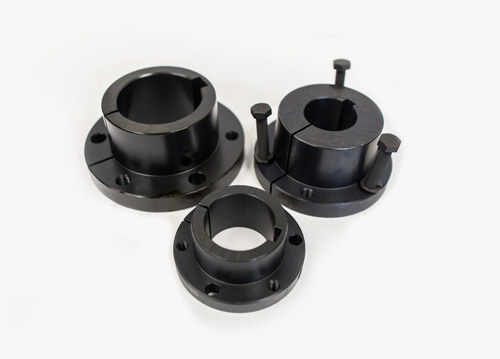
Where can I find video tutorials on the correct installation and alignment of QD bushings?
If you are looking for video tutorials on the correct installation and alignment of QD (Quick Disconnect) bushings, there are several platforms where you can find helpful resources. Video tutorials can provide visual guidance, step-by-step instructions, and practical demonstrations, making it easier to understand the proper techniques for installing and aligning QD bushings. Here are some places to explore:
- Manufacturer Websites: Many manufacturers of QD bushings provide video tutorials and demonstration videos on their websites. These videos are often created by the manufacturers themselves and offer detailed instructions specific to their products. Visiting the websites of reputable QD bushing manufacturers in the power transmission industry can help you access these valuable resources.
- YouTube: YouTube is a popular platform for finding video tutorials on a wide range of topics. Searching for keywords such as “QD bushing installation” or “QD bushing alignment” can lead you to various video tutorials created by individuals, companies, or educational channels. You can watch multiple videos to gain different perspectives and learn various techniques for installing and aligning QD bushings.
- Trade Association and Industry Websites: Trade associations and industry organizations related to mechanical power transmission or industrial equipment often provide educational resources, including video tutorials. These websites may have dedicated sections or video libraries that cover topics such as QD bushing installation and alignment. Examples of such organizations include the Power Transmission Distributors Association (PTDA) and the Mechanical Power Transmission Association (MPTA).
- Online Training Platforms: Online training platforms that focus on industrial maintenance, mechanical engineering, or power transmission systems may offer video courses or modules that cover the installation and alignment of QD bushings. These platforms often provide comprehensive training materials and may require a subscription or fee to access the content. Examples of such platforms include Udemy, LinkedIn Learning, or Skillshare.
- Equipment Manufacturer Websites: Websites of manufacturers or suppliers of agricultural, construction, or industrial equipment that utilize QD bushings in their products may have video tutorials on the installation and alignment of these components. These videos are often specific to the equipment and may cover the integration of QD bushings within the larger machinery.
When watching video tutorials, it’s important to ensure that the content is from a reliable source and aligns with industry best practices. Consider videos created by reputable manufacturers, experts in the field, or trusted educational channels. Pay attention to the clarity of the instructions, the quality of the demonstration, and any safety precautions mentioned during the installation and alignment process.
By exploring these platforms and utilizing video tutorials, you can gain visual guidance and practical insights into the correct installation and alignment of QD bushings, ensuring their proper functioning and longevity in your mechanical systems.

Can I get advice on selecting the right QD bushings based on torque, speed, and load requirements?
When selecting the right QD (Quick Disconnect) bushings based on torque, speed, and load requirements, it is crucial to consider several factors to ensure optimal performance and compatibility. Here is some advice to guide you in the selection process:
- Torque Capacity: Determine the maximum torque that will be transmitted through the QD bushing in your application. This can be influenced by factors such as the power source, driven component, and operating conditions. Check the manufacturer’s specifications for the QD bushing’s torque capacity rating. It is important to choose a QD bushing that can handle the anticipated torque without exceeding its limits to ensure reliable and safe operation.
- Speed Limitations: Consider the rotational speed or RPM (revolutions per minute) at which the QD bushing will operate. Higher speeds can generate centrifugal forces, which can affect the performance and stability of the bushing. Verify the manufacturer’s specifications for the maximum recommended speed rating of the QD bushing. Ensure that the selected bushing can handle the anticipated speed without compromising its integrity or causing excessive wear.
- Load Requirements: Evaluate the applied load on the QD bushing, including axial, radial, and moment loads. Consider factors such as the weight of the driven component, dynamic forces, and any external forces acting on the system. Check the manufacturer’s specifications for the load capacity ratings of the QD bushing. It is essential to select a bushing that can withstand the anticipated loads without experiencing excessive deformation or failure.
- Material Selection: QD bushings are available in various materials, such as steel, stainless steel, and cast iron. Consider the environmental conditions, temperature range, and potential exposure to corrosive substances or contaminants in your application. Choose a QD bushing material that offers the necessary strength, corrosion resistance, and durability for the specific operating conditions.
- Consult with Manufacturers and Engineers: If you have specific and complex requirements or are unsure about the selection process, it is advisable to consult with QD bushing manufacturers or experienced engineers. They can provide expert guidance based on their knowledge and experience. Sharing comprehensive information about your application, including torque, speed, load requirements, and other relevant factors, will help them recommend the most suitable QD bushing for your needs.
It is crucial to note that selecting the right QD bushings goes beyond torque, speed, and load requirements. Other factors, such as shaft diameter, shaft fit, axial positioning requirements, and compatibility with the driven component, also play a significant role. Always refer to the manufacturer’s specifications, guidelines, and recommendations to ensure proper selection and installation of the QD bushings in your power transmission or conveying system.
By considering these factors and seeking professional advice when needed, you can make informed decisions and choose the right QD bushings that meet your torque, speed, and load requirements, leading to optimal performance and longevity of your system.

Can I get step-by-step instructions on installing QD bushings for different mechanical setups?
While I can provide a general overview of the installation process for QD bushings, it’s important to note that the specific installation steps can vary depending on the mechanical setup and the manufacturer’s guidelines. It is recommended to consult the manufacturer’s instructions and specifications for the specific QD bushing you are using. However, here is a general outline of the steps involved in installing QD bushings:
- Gather the necessary tools and equipment: Before you begin the installation process, ensure you have the required tools and equipment on hand. This may include wrenches, torque wrenches, a mallet or hammer, and any additional components or accessories specified by the manufacturer.
- Prepare the shaft and the mounting component: Clean the shaft and the inner bore of the mounting component to remove any dirt, debris, or old lubricants. Ensure that the shaft surface is smooth and free from any damage or burrs that could interfere with the installation process.
- Inspect the QD bushing: Before installing the QD bushing, inspect it for any visible damage or defects. Ensure that the tapered surfaces and the flange are clean and free from any debris that could affect the installation or the connection with the shaft and the mounting component.
- Position the QD bushing: Place the QD bushing over the shaft, ensuring that it aligns properly with the desired location on the shaft. The flange of the bushing should be facing the mounting component.
- Engage the QD bushing: Apply even pressure to the outer surface of the QD bushing to initiate the engagement. This can be done using a mallet or hammer. Ensure that the bushing is centered and properly seated on the shaft. Avoid applying excessive force that could damage the bushing or the shaft.
- Tighten the QD bushing: Using the specified torque value provided by the manufacturer, tighten the QD bushing by turning the tightening screws or bolts evenly. Follow the recommended tightening sequence provided by the manufacturer to ensure an even and secure connection. Be careful not to over-tighten the bushing, as this can cause damage.
- Verify the installation: After tightening the QD bushing, inspect the connection to ensure that it is secure and properly aligned. Check for any axial movement or play between the bushing, shaft, and mounting component. Verify that the mounted component is positioned correctly and securely fastened to the bushing.
- Complete the installation: Once you have verified the installation, proceed with any additional steps required for your specific mechanical setup. This may involve attaching other components, aligning belts or chains, or performing any necessary adjustments or calibrations.
It’s important to note that the above steps are a general guide and may not cover all possible scenarios or variations. Always refer to the manufacturer’s instructions and guidelines specific to the QD bushing you are using. Following the manufacturer’s recommendations will ensure proper installation and optimal performance of the QD bushing in your mechanical setup.


editor by CX 2023-12-29